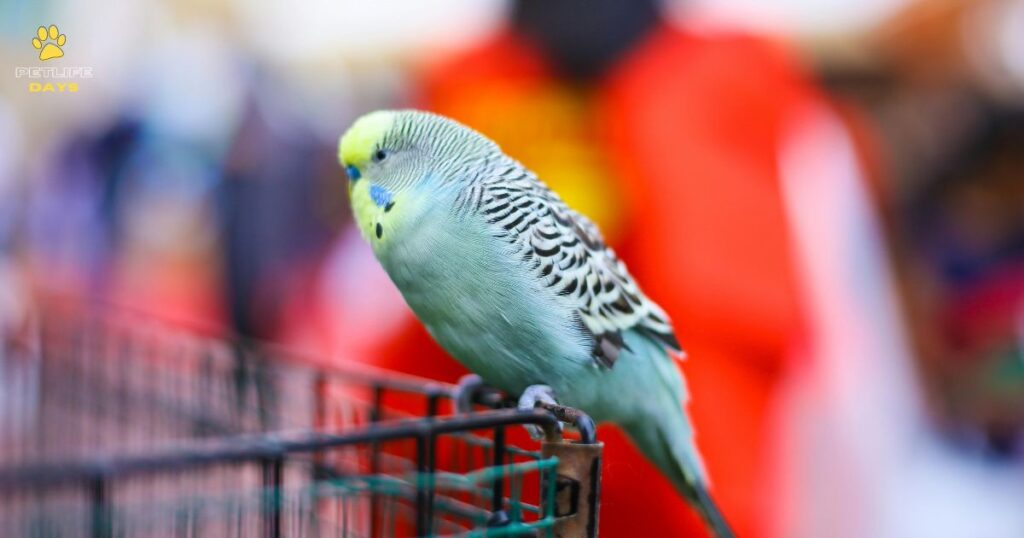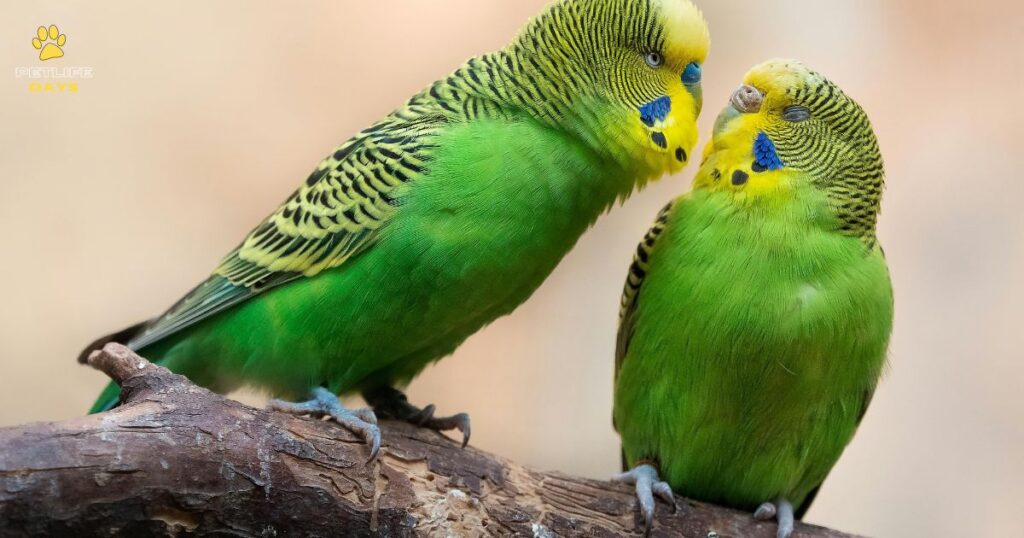In this article, we’ll take you on a journey into How long does it take for Parakeet Eggs to Hatch.
Do you know how many days parakeet eggs can take to hatch? On average, it takes approximately 18-22 days to hatch. If you’re a proud parakeet owner, you’ve probably wondered how long you’ll have to wait for those adorable babies to come out of the eggs.
Well, not surprising anymore! From the time the female parakeet lays her eggs until the exciting moment of the first crack, the breeding season is filled with anticipation and excitement During this time, the parents take turns laying eggs and are taxed to grow.
But how many days does it take? And what factors can influence this magical process?
Let’s Join us as we delve into the parakeet journey from egg to hatch. We’ll break down average time, talk about the importance of temperature and humidity, and even share some tips on creating the best conditions for your parakeet eggs Get ready to take in the wonders of nature and get a better sense of your favorite bird companions.
Table of Contents
Lets start discussing How long does it take for Parakeet Eggs to Hatch
The parakeet's egg-laying process
The female parakeet can spend up to 10 days in the nesting box before she lays any eggs. During this time, she will emerge to poo and nibble on her mineral block. The 1st egg will lay for approximately 12th days during the nesting box spending time and then after one every two days gap, the female parakeet lays an egg.
Female parakeets can lay up to 4 to 10 eggs during their breeding clutch and each egg needs incubating 18-22 days to hatch. If any egg remains unhatched after 23 days, it will not hatch.
Importantly, a female parakeet can lay eggs without a male to incubate them. Once the female parakeet’s hormones start the reproductive cycle, the ovary releases mature eggs through a process called fertilization. The egg descends through the reproductive tract into the cloaca, where it awaits fertilization. When pregnancy occurs, the egg begins to develop into an embryo.

The incubation period of parakeet eggs
The parakeet egg-laying process is an interesting one. Female Parakeets lays their 1st egg on their 12th day during the nesting box spending time then lay one egg every other day until she has laid a clutch of four to ten eggs maximum. The eggs are usually laid in a nest box or breeding box with a suitable nesting spot within the cage or aviary. Once the eggs are laid, the incubation period begins.
During the egg-laying process, it is essential to provide your parakeet with a comfortable and stress-free environment. This includes providing a suitable nesting site, ensuring a proper diet rich in calcium, and minimizing disturbances in the cage or aviary and also crucial to monitor the female parakeet’s behavior and health during this time. Ensure she is in good condition for egg-laying.
Parakeets are known to be excellent parents, with both the male and female taking equal responsibility for the eggs. They take turns incubating the eggs, with one parakeet sitting on the eggs while the other goes about its daily activities. This behavior ensures that the eggs are kept at a constant temperature and humidity, which is crucial for successful hatching.
Factors that affect the incubation period
During the incubation period, parakeet eggs can vary depending on several factors. Approximately 18-22 days for parakeet eggs to hatch. However, this time frame can be influenced by various factors such as temperature, humidity, and even the individual characteristics of the parents.
Temperature plays a significant role in the development of parakeet egg fertilization. The ideal temperature for incubating parakeet eggs ranges from 99 to 102 degrees Fahrenheit (37 to 39 degrees Celsius). It is crucial to maintain a consistent temperature throughout the incubation period to ensure the egg fertilization properly. Fluctuations in temperature can lead to delayed hatching or even unsuccessful hatching.
Humidity levels also play a vital role in the incubation process. The ideal humidity for parakeet eggs is around 40-50%. This helps prevent the eggs from drying out and ensures the proper development of the chicks inside the egg. It is essential to monitor and maintain humidity levels to prevent complications during incubation.
Signs of likely hatching
Several factors can affect the incubation period of parakeet eggs. One of the primary factors is the temperature at which the eggs are kept. Higher temperatures can speed up the incubation process, while lower temperatures can delay it. It is crucial to find the right balance and maintain a consistent temperature throughout the incubation period.
The quality and fertility of the eggs can also impact the incubation period. Fresh, fertile eggs have a higher chance of successful hatching compared to older or infertile eggs. It is essential to carefully examine the eggs before placing them in the incubator to ensure they are possible.
The genetic characteristics of the parents can also influence the incubation period. Some parakeet pairs may have a genetic predisposition for shorter or longer incubation periods. It is essential to observe and track the incubation period for each pair to understand their tendencies.
How to care for Parakeet eggs during incubation?
As the incubation period nears to its end, several signs indicate the chicks are about to hatch. One of the most noticeable signs is some “chirping sounds” inside the eggs. This chirping is the chicks communicating with each other and preparing to break free from their shells.
Another sign is the movement of the eggs. As the chicks inside get ready to hatch, they move and shift within the eggs. This movement may be visible if you carefully observe the eggs.
Additionally, the parent’s behavioral changes after hatching approaches. They may become more attentive to the eggs, frequently checking on them and adjusting their position. The parent’s behavior can provide valuable clues about the stage of hatching.
Hatching process of parakeet eggs
Proper care during the incubation period is crucial for the successful hatching of parakeet eggs. The most essential factor is temperature. It is vital to maintain a consistent temperature within the recommended range throughout the entire incubation period. Fluctuations in temperature can negatively impact the embryos’ development and increase the risk of unsuccessful hatching.
Humidity levels should also be carefully monitored and maintained. As mentioned earlier, the ideal humidity for parakeet eggs is around 40-50%. This can be achieved by using a hygrometer to measure humidity levels and adjusting it accordingly by adding or removing moisture from the incubator.
It is also important to minimize disturbances and stress during the incubation period. Avoid excessive handling of the eggs and minimize noise and vibrations near the incubator. These factors can cause unnecessary stress to the embryos and hinder their development.
Timeframe for parakeet eggs to hatch
The hatching process of parakeet eggs is an incredible sight to behold. It all begins with the chicks inside the eggs using their egg tooth, a small, temporary projection on their beak, to make a small crack in the shell. This initial crack allows them to take their first breaths of air and prepare for the final push to break free.
Once the initial crack is made, the chicks continue to chip away at the shell using their beaks and feet. This process can take several hours or even a day to complete. As the chicks make progress, you may notice small pieces of shell scattered around the nest.
It is important not to intervene or assist the chicks during the hatching process unless absolutely necessary. The hatching process is a natural one, and the chicks need to exert effort to strengthen their muscles and prepare for life outside the egg. Premature assistance can hinder their development and increase the risk of complications.

Common challenges during hatching
Parakeet eggs take approximately 18-22 days to hatch. However, it is essential to note that this time frame can vary depending on various factors, as mentioned earlier. Factors such as temperature, humidity, and individual characteristics of the parents can influence the incubation period.
It is important to be patient during the incubation period and avoid prematurely assuming that the eggs are not viable. Some eggs may take longer to hatch, and it is crucial to give them the necessary time to develop fully.
Conclusion and tips for successful parakeet breeding
FAQ
Taking good care of newborn parakeets, sometimes called budgies, entails reacting to their individual needs and creating a caring setting for them. The following is a guide to caring for juvenile parakeets:
- Brooder Configuration:For the first week, nurture the baby parakeets in a heated brooder that is kept between 85 and 90°F (29 and 32°C). As they grow, gently lower the temperature.Use soft, non-toxic bedding to line the brooder.
- Feeding:Use a syringe or spoon to manually feed the chicks a commercial hand-feeding formula if their parents aren’t feeding them.As they get older, gradually introduce soft foods while maintaining the specified feeding schedule.
- Keeping an Eye on Weight:Make sure the chicks are gaining weight appropriately by weighing them every day. For this, a digital kitchen scale works wonderfully.
- Drink plenty of water:Make sure the chicks have enough water. You can use a tiny water bottle or a shallow plate to serve them water.
- Getting Along with People:To assist the chicks get used to human presence, spend time with them. This helps them become more socialized.
- Configuring the Cage: Move the chicks to an appropriate cage with perches, toys, and feeding bowls as soon as they are feathered and able to control their body temperature.
- Healthy Eating: Offer a well-rounded meal composed of fresh veggies, minimal amounts of fruits, and commercial budgie pellets. Don’t feed them chocolate and avocado.For calcium, add cuttlebone or mineral blocks.
- Veterinary Medical Attention: Plan on seeing a veterinarian for birds frequently to keep an eye on their health and take care of any possible problems.
- Progressive Weaning: Wean the chicks off of the hand-feeding formula gradually by introducing soft foods and letting them feed themselves.
- Enhancement of the Environment: Provide them with an assortment of toys, swings, and perches to maintain mental stimulation. As gregarious birds, budgies require a stimulating environment to ensure their health.
- Observation and Patience: Remain vigilant and patient. Keep a watch out for any symptoms of disease, stress, or strange activities.
Keep in mind that every young parakeet may have various wants, so examine how they develop on an individual basis. For specialist assistance, address any anxieties or inquiries with a veterinarian who specializes in birds of prey.
Parakeet health problems could include mites, tumors, respiratory infections, gastrointestinal illnesses, and complications associated with eggs. For their health, a balanced diet, periodic veterinarian examinations, and focused attention are vital. Consult a veterinarian right once if you see any symptoms of sickness.
Although it is technically doable, it is not encouraged to breed different species of parakeets because of possible issues like hybridization, challenges with genetic compatibility, conservation concerns, and ethical considerations. To preserve genetic purity and secure the health of the birds, it is typically advised to breed within the same species.

